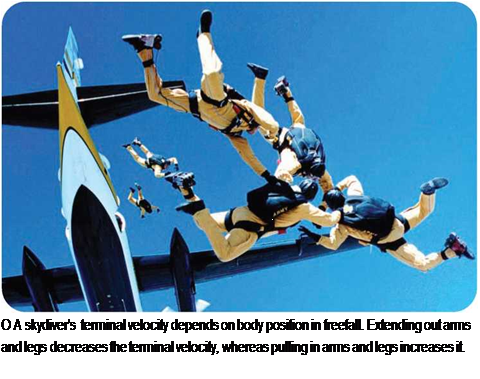Velocity
|
V |
elocity is speed in a particular direction. Velocity changes when speed or direction, or both, are altered. An airplane flying north at 500 miles per hour (805 kilometers per hour) has a speed of 500 miles per hour (805 kilometers per hour) and a velocity of 500 miles per hour (805 kilometers per hour) north. If two airplanes are flying in the same direction at the same speed, they have the same velocity. If the two planes are flying at the same speed but in different directions, they have different velocities.
Velocity and Change
The direction of velocity need not be a straight line. An object moving in a circle-such as an airplane turning or a spacecraft orbiting Earth-is said to have angular velocity. Anything that moves with a steady, unchanging velocity is described as having a uniform velocity. According to Newton’s first law of motion, an object stays at rest or moves at a uniform velocity unless a force acts upon it.
When a spacecraft fires a rocket to go faster or change its orbit, its change in velocity is called delta-v. The Greek letter delta is often used by mathematicians and physicists to mean a change in something. In this case, it is the velocity (v) that changes.
Velocity also can be defined as the rate of change in displacement. Distance is the length of the path taken by a
vehicle. Distance is a number, so it is a scalar quantity. Displacement is the length of the straight line between the start point and end point of a vehicle’s journey. It is distance in a certain direction, so it is a vector quantity. (A vector is something that has magnitude and direction.)
HYPERVELOCITY
![]() An extremely high velocity, higher than about 6,700 miles per hour (about 11,000 kilometers per hour), is known as hypervelocity. Spacecraft returning to Earth enter the atmosphere at hypervelocity. According to Einstein’s theory of relativity, the highest velocity possible in the universe is the velocity of light. Light travels through space at a speed of
An extremely high velocity, higher than about 6,700 miles per hour (about 11,000 kilometers per hour), is known as hypervelocity. Spacecraft returning to Earth enter the atmosphere at hypervelocity. According to Einstein’s theory of relativity, the highest velocity possible in the universe is the velocity of light. Light travels through space at a speed of
186,0 miles (about 300,000 kilometers) per second.
|
О Meteoroids (small space rocks) enter Earth’s atmosphere at hypervelocity and become meteors (shooting stars). |
|
|
 An airplane that takes off and flies 200 miles (320 kilometers) in a circle, landing back on the same runway where its journey began, travels a distance of 200 miles (320 kilometers), but its change in displacement is zero.
An airplane that takes off and flies 200 miles (320 kilometers) in a circle, landing back on the same runway where its journey began, travels a distance of 200 miles (320 kilometers), but its change in displacement is zero.
Its average speed is the distance traveled divided by the flight time, or 200 miles per hour (320 kilometers per hour). Its average velocity is its change in displacement divided by the flight time. As the plane’s change in displacement is zero, its average velocity for the whole flight is also zero.











